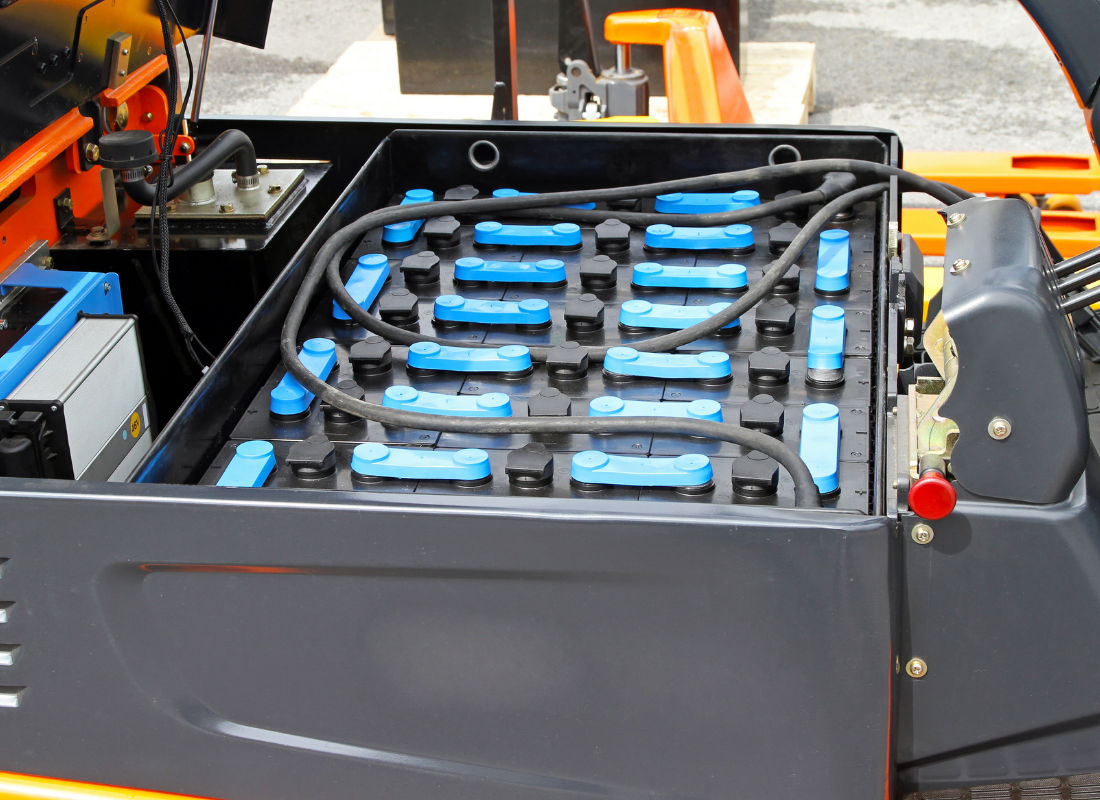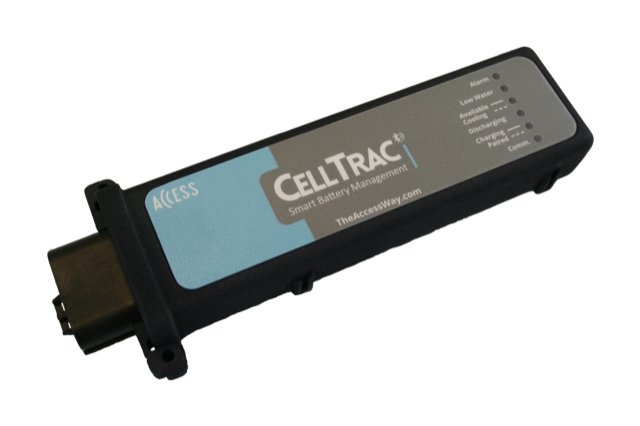Battery Temperature: Are You Monitoring It?
Your battery is no longer a black box — the cost of acquisition can be anywhere between $6-$9K. So, what after this huge investment? Are you even monitoring your batteries for temperature, water level, and state of charge (SoC)?
Soaring temperature is the biggest threat to a battery. It is not only a threat if the battery suffers high temperatures internally but also when the ambient air outside the battery becomes warm. Therefore, monitoring the temperature inside the battery is essential for fleet owners and fleet managers to get the most out of them.
How Heat Affects Battery Temperature
 There have been a plethora of studies on the effect of heat on batteries. These studies have shown that high temperatures jeopardize the performance, and lifecycle of the battery.
There have been a plethora of studies on the effect of heat on batteries. These studies have shown that high temperatures jeopardize the performance, and lifecycle of the battery.
Studies have shown that for each 8°C rise in temperature, a sealed lead acid battery loses half of its lifecycle. Moreover, once the heat has damaged a battery, its capacity cannot be returned.
As mentioned, high-temperature issues in a battery don’t only occur internally; they also happen externally. If a battery’s temperature is higher than the temperature of the environment around it, it can lose heat due to conduction, convection, and radiation. If the ambient temperature is higher than the internal temperature of a battery, then the battery becomes hotter.
Subsequent Improvements
As a result, manufacturers have improved their batteries over time to be more resistant to heat. A 2000 Battery Council International (BCI) study shows that a temperature increase of only 7°C can adversely affect a battery’s life cycle by one year. By 2010, improvements showed a rise in temperature of 12°C causes a battery to lose one year of its life.
Improvements in batteries resulted in the amount of time a battery lasts by as much as 21 months. In 1962, a starter battery lasted 34 months; in 2000, it lasted 41 months, and in 2010, studies showed that it lasted an average of 55 months.
Battery manufacturers were quick to determine that batteries needed a thermal management system and developed such a system that assists in protecting the entire battery pack. A single cell commonly works fine on its own. But, when working in coordination with all the cells of a battery, the battery pack can experience dramatic increases in temperatures.
Another threat to battery health is its water level, learn the best practices to manage the right amount inside each battery.
Heat Dissipation
Manufacturers utilize battery management systems to help dissipate heat. These systems include:
1. Overheat protection that monitors temperature and interrupts the current path when the temperature within the battery gets too high.
2. Dissipation of generated heat that results in the removal of heat from the battery to avoid temperatures that could damage it. Heat is dissipated through convection, conduction, and radiation.
3. Uniform heat distribution that helps to dissipate heat and localize and manage hot spots.
4. Forced cooling on batteries that are used in high power applications, including electric and hybrid electric vehicles.
More research is being done to develop more protection for batteries. For example, researchers at Stanford University have been experimenting with smart batteries that turn themselves off when they reach temperatures exceeding 71°C. They restart only after cooling down.
Battery Charger Protection
Temperature can also affect the charging of a battery. For example, charging a battery at an average temperature increases the life of a battery, and a battery accepts a charge more efficiently at higher temperatures. However, a battery takes less current at lower temperatures.
A battery operates best between the temperatures of 18°C to 25°C. As temperature rises in a battery, the chemical reaction is quicker. This permits the battery’s output to improve. Although, if the chemical reaction is too fast, then the chemicals may be lost, and this decreases the life of the battery. If temperatures rise even higher, then thermal runaway occurs and may adversely affect battery life.
The internal resistance of the battery rises at lower temperatures, and the output of the battery decreases. When temperatures are even lower, the electrolyte may freeze, causing the battery to stop working. Because of this, many battery chargers are equipped with sensors that measure temperature.
Need For Temperature Sensors 
Temperature sensors are also needed on a battery because heat is generated whenever a battery is charged, and increases the ambient heat and internal heat of the battery. Thus, a temperature sensor is needed on the battery charger because the battery temperature is high; the charger reduces the voltage supply to ensure peak charging and prevents overheating of the battery. The charger uses a higher voltage to the battery at lower temperatures to offset the increased resistance caused by the low temperature.
Unsure which battery is right for your operation? Check out the full breakdown comparison Lead-Acid vs. Lithium-Ion batteries.
Conclusion
Fleet managers can rely on a telematics battery monitoring and management system to warn whenever the temperature inside their batteries changes avoiding overheating problems that can lead to battery damage and even an explosion. The device can also identify other issues with a battery and then warn you of those problems with reports so that you can do what is necessary to prevent any further problems. The reports also assist in creating a battery management program and maintenance schedule that prevents problems from occurring.
Visit the Access Control Group website or consult with an Access representative to find out more about how telematics products can assure the full life of your fleet’s batteries. Our solutions can even help with the protection of your personnel from possible injuries and accidents.

